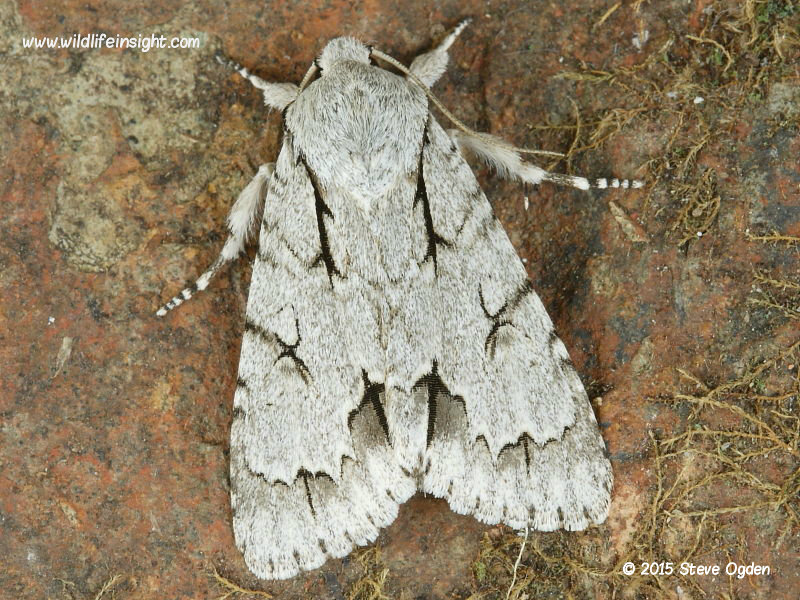The Grey Dagger Moth, Acronicta psi
The Grey Dagger moth is a common species found throughout much of the British Isles and Europe.
The adult moth has a wingspan of about 40 mm.
Without close examination the Grey Dagger, Acronicta psi is indistinguishable from the Dark Dagger, Acronicta tridens.
However, the fully grown caterpillars of these two Dagger species are distinctively different.
Many species of the Acronictinae sub family are referred to as Dagger Moths due to the black, dagger like streaks on the forewings of several species.
Other common Dagger species include common species such as Dark Dagger, The Miller, The Sycamore, Poplar Grey, Alder Moth and The Knot Grass.
Other caterpillars can be seen in the caterpillar galleries.
Grey Dagger caterpillar, Acronicta psi
Life Cycle of Grey Dagger moth, Acronicta psi
In the British Isles the Grey Dagger moth flies mostly in a single generation between May and June but can have a partial second generation in the south.
Eggs are laid on the larval foodplant and hatch within 7 days.
The caterpillars feed on a wide variety of deciduous trees including Oak, Hawthorn, Birch and Elm.
The caterpillars are fully grown in 30-35 days.
The photographs shown are of broods reared from eggs laid by females attracted to light by John Foster on the Lizard, Cornwall.
The Grey Dagger Moth pupa, Acronicta psi
Pupation takes place amongst the bark of trees with the pupae overwintering.
Those larvae featured above were reared on blackthorn and readily pupated on the underside of tree bark laid down on a thin bed of soil and leaf litter.
The over wintering pupae were kept in a cool outhouse and brought inside during the Spring.
Moths began emerging in the first week of May.
Other commonly found ‘Dagger’ species (Acronictinae) in the British Isles and many parts of Europe include The Dark Dagger, The Alder Moth, The Sycamore, The Knot Grass, The Poplar Grey and The Miller.
Recommended moth and caterpillar reference books
The Colour Identification Guide to Caterpillars of the British Isles – Jim Porter.
Field Guide to the Moths of Great Britain and Ireland – Waring, Townsend and Lewington.
Provisional Atlas of UK’s Larger moths
